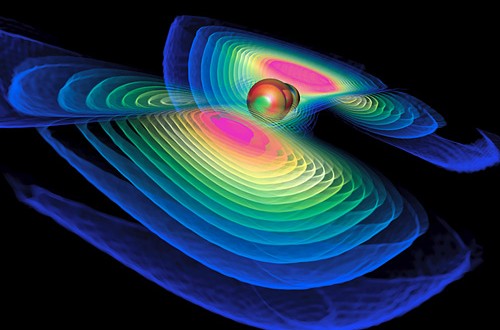Rumors of gravitational wave discovery is just that, source says.
Gravity exists — anyone who has ever fallen on their ass and witnessed their dignity crash with it knows this to be a fact. How it works, however, has always remained a mystery. In 1915, Albert Einstein theorized that gravitational waves — which he described as ripples in spacetime — basically make gravity happen. Since then, scientists have been looking for these ripples without any luck.
And now, 100 years later, we might have finally found them. Naturally, it’s Twitter that seems to have helped break the news:
My earlier rumor about LIGO has been confirmed by independent sources. Stay tuned! Gravitational waves may have been discovered!! Exciting.
— Lawrence M. Krauss (@LKrauss1) January 11, 2016
That’s the famous theoretical physicist Lawrence Krauss, perhaps best known for his work in dark energy. Krauss is referring to a rumor last fall that the Laser Interferometer Gravitational-Wave Observatory (LIGO) operated by researchers at Caltech and MIT finally detected the elusive waves.
LIGO has been searching fruitlessly for gravitational waves since 2002. However, a recent upgrade completed last year that makes the system three times more sensitive than before started operating last September. It looks like the investment has paid off — assuming the rumors are true.
Gravitational waves occur when large masses in the universe move very suddenly — like two big planetary objects colliding into one-another, the explosion of a supernova, or two black holes merging. The result of insanely large disturbances are ripples that push out the same way, like when you toss a rock in a pond.
But like most things in physics research, you can’t just look for gravitational waves with your own two eyes. You have to have the right kind of instruments. LIGO is comprised of two big laser ‘interferometers’ — which basically work by merging two or more sources of light to create an interference pattern that makes very small measurements. The goal is to basically look for incredibly small changes — like at the scale of one ten-thousandth the width of a proton — that would be a signature of activity by a gravitational wave.
If LIGO has actually found gravitational waves, it’s remaining very tightlipped. Back in September, a spokesperson told Nature it was still “analyzing the data.”
And on Monday, Alan Weinstein, the head of LIGO at Caltech, told Gizmodo essentially the same thing: “We are analyzing 01 data and will share news when ready.”
Of course, the scientists at LIGO are right to be cautious. There’s always a chance the signal they found could be false. Krauss tells New Scientist that the LIGO team is writing a paper on the finding, so this is unlikely, but you never know.
Everyone should hope the rumors are true. Finding gravitational waves is an essential part of reconciling classical physics with quantum physics, and will finally allow scientists to develop an all-encompassing theory for how the universe works.
This would be one of the biggest discoveries of the century so far — if not the outright biggest.
Agencies/Canadajournal
 Canada Journal – News of the World Articles and videos to bring you the biggest Canadian news stories from across the country every day
Canada Journal – News of the World Articles and videos to bring you the biggest Canadian news stories from across the country every day



